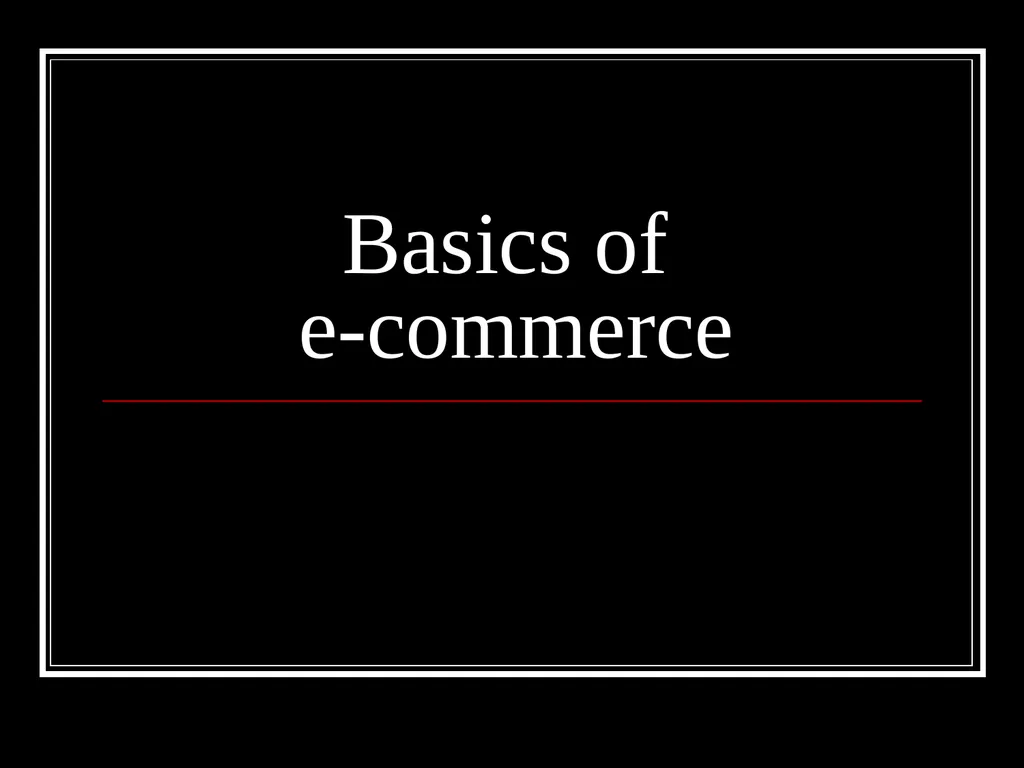Basics of e-commerce What is e-commerce?
Author : liane-varnes | Published Date : 2025-05-09
Description: Basics of ecommerce What is ecommerce ecommerce means using the Internet or related technologies for any of the normal business operations The use of information and communication technologies to transform business processes and to
Presentation Embed Code
Download Presentation
Download
Presentation The PPT/PDF document
"Basics of e-commerce What is e-commerce?" is the property of its rightful owner.
Permission is granted to download and print the materials on this website for personal, non-commercial use only,
and to display it on your personal computer provided you do not modify the materials and that you retain all
copyright notices contained in the materials. By downloading content from our website, you accept the terms of
this agreement.
Transcript:Basics of e-commerce What is e-commerce?:
Basics of e-commerce What is e-commerce? "e-commerce" means using the Internet or related technologies for any of the normal business operations. The use of information and communication technologies to transform business processes and to take advantage of the many features of the Web environment Using ICT for buying, selling, advertising, production, distribution or management. Working of e-commerce model Evolution of e-commerce Transaction-oriented e-commerce during 1990’s Customer-Centric e-commerce Features: Customer is the king Entry barriers are low It leads to disintermediation: infomediaries are there Economies of scale depends upon number of transaction Traditional business vs. e-commerce Formed from a combination of the words information and intermediary, an infomediary is a Web site that gathers and organizes large amounts of data and acts as an intermediary between those who want the information and those who supply the information. The infomediary is a neutral entity, a third-party provider of unbiased information; it does not promote or try to sell specific products in preference over other products. It does not act on behalf of any vendors. Another type of infomediary, and one that is not necessarily Web-based, is one that provides vendors with consumer information that will help the vendor develop and market products. The infomediary collects the personal information from the buyers and markets that data to businesses. The advantage of this approach is that consumer privacy is protected and some infomediaries even offer consumers a percentage of the brokerage deals. Infomediaries Websites that are replacing the distributors and dealers. From the simple role of a search engine, they have evolved into 3 models: 1. Aggregators: It can selectively extract information from a Web site, couple it with additional data from other sources including those of its competitors, and make the necessary fine-tuning for intelligent comparisons. 2. Online auctioneers 3. Online exchanges Basic rules of e-commerce: Know your customer Profiles and preferences Combination of products and services to be offered. Best methods for customers support Marketing efforts for different segments New products and services that should be developed Segment customers Using e-commerce segmentation can be done on the basis of the complex factors also such as channel preference, profitability, etc. Collaborative segmentation is also possible, where customers can choose from a flexible menu of offerings, configure them to suit their preferences and select the segment they fit in. Avoid the ‘Silo’ effect: The scattered information across different files, in different formats and at














